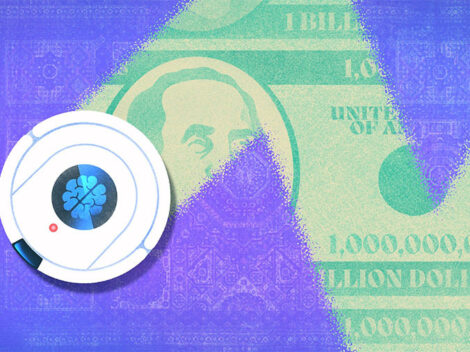Until recently, taking a unicorn public pretty much always involved a traditional initial public offering or direct listing. But in recent quarters, a once-obscure option—a merger with a special purpose acquisition company, or SPAC—has become an increasingly mainstream alternative.
In the past few weeks, a series of strong debuts from companies in the electric vehicle and autonomous driving spaces offer fresh support for the notion of SPAC mergers as a viable path to public markets.
Subscribe to the Crunchbase Daily
The most recent, autonomous driving technology provider Luminar, completed its offering Thursday. Shares closed up 28 percent, delivering the Florida-based company a reported initial market capitalization of around $7.8 billion.
In prior weeks, at least four other transport deals have hit valuations in the multiple billions:
- QuantumScape, a Silicon Valley-based developer of battery technology to extend the range of electric vehicles, completed its merger the Friday after Thanksgiving. The company soared in initial trading, with a first-day enterprise value around $16.56 billion. Although shares have fallen a bit since, it’s still several multiples higher than the initial target valuation.
- Fisker, the Los Angeles-based maker of high-end electric vehicles, completed a SPAC merger a month ago. It recently sported a market cap around $4.8 billion. Not a bad comeback for a company that seven years ago filed for bankruptcy.
- Lordstown Motors, a maker of light-duty trucks for the electric fleet market, completed its merger on Oct. 26. The Lordstown, Ohio-based company, which trades under the ticker symbol RIDE, was recently valued around $3.6 billion.
- Velodyne LiDAR, the San Jose-based maker of LiDAR sensors for autonomous vehicles, went public in November and recently had a market cap around $2.7 billion.
Those are far from the only deals getting done. Over the last few months, we’ve seen new announcements of SPACs hitting the market, identifying acquisition targets, or completing mergers pretty much daily.
The pace shows no sign of ebbing. At last count 204 new SPACs have debuted on major exchanges this year, collectively raising just over $70 billion. These blank-check companies come to market with the express purpose of finding a private company to acquire. Often it’s a venture-backed startup.
SPAC managers know right away from public investors if they’ve picked a compelling candidate and negotiated appealing terms. In the wake of several announced tie-ups, including homebuying platform Opendoor (merging with Social Capital Hedosophia II) and pay-per-mile insurer Metromile (merging with INSU Acquisition Corp.), shares of the underlying SPAC have surged in response.
“We call it the ‘SPAC pop’ if they announce a tremendous deal,” said Julian Klymochko, a hedge fund pro who runs the Accelerate Arbitrage Fund, which invests in SPACs. It’s a strong indication of pent-up demand, especially given that the proposed merger will likely take weeks or months more to finalize, culminating in a new ticker symbol.
While high-flying SPAC deals often see their biggest gains after merger completion, these post-announcement runups can also be sizable. Klymochko’s fund, for instance, which sells SPAC holdings upon merger completion, is up 19 percent since its launch in April.
As we’ve examined before, companies going public via the SPAC route have tended to be more speculative or earlier on the path to profitability than those going the IPO route. That includes such offerings as Virgin Galactic, the space tourism company, and automakers Fisker and Lordstown, which do not yet have vehicles available.
Looking at more recent SPAC tie-ups, however, we’re seeing deals involving more mature venture-backed companies. Metromile, for instance, is a 10-year-old, revenue-producing company that’s raised nearly $300 million in venture funding.
Another planned merger announced last week—between smart-glass maker View and a SPAC sponsored by Cantor Fitzgerald & Co.—involved an even more heavily funded company. Founded in 2007, Milpitas, California-based View has raised $1.8 billion to date from SoftBank and other backers.
With so many blank-check companies floating around looking for acquisition targets, private venture-backed unicorns and their backers also report they’re seeing regular inquiries. Since these deals offer a faster path to the public market than a traditional IPO, exit-seeking startups are paying attention.
“The IPO is not going away, but this is definitely a widely accepted route,” said Kurt Shenk, senior analyst at consulting firm RSM, regarding companies going public via SPAC mergers. The numbers speak for themselves, he adds, noting that this year there have actually been more U.S. SPACs than IPOs on the major exchanges.
For now, with public markets riding high, SPAC momentum continues. And the SPAC pop, it appears, will continue to be a thing.
Illustration: Li-Anne Dias

Stay up to date with recent funding rounds, acquisitions, and more with the Crunchbase Daily.






![Illustration of a guy watering plants with a blocked hose - Global [Dom Guzman]](https://news.crunchbase.com/wp-content/uploads/quarterly-global-3-300x168.jpg)
67.1K Followers